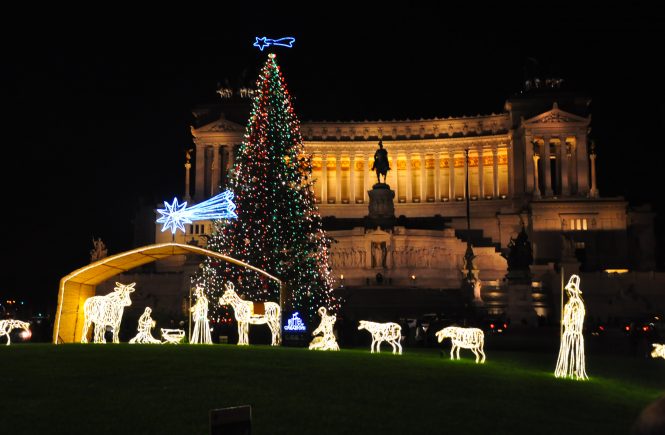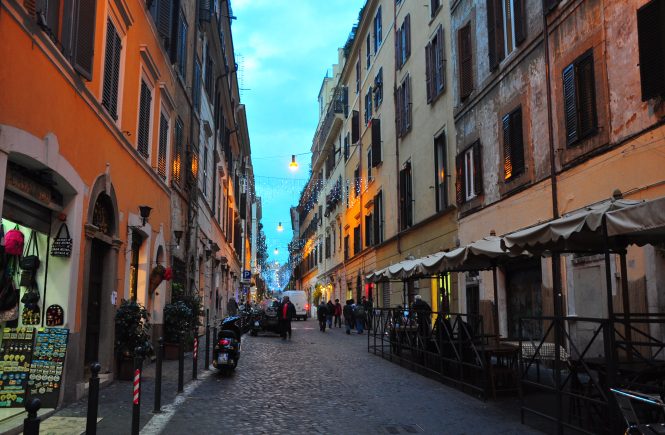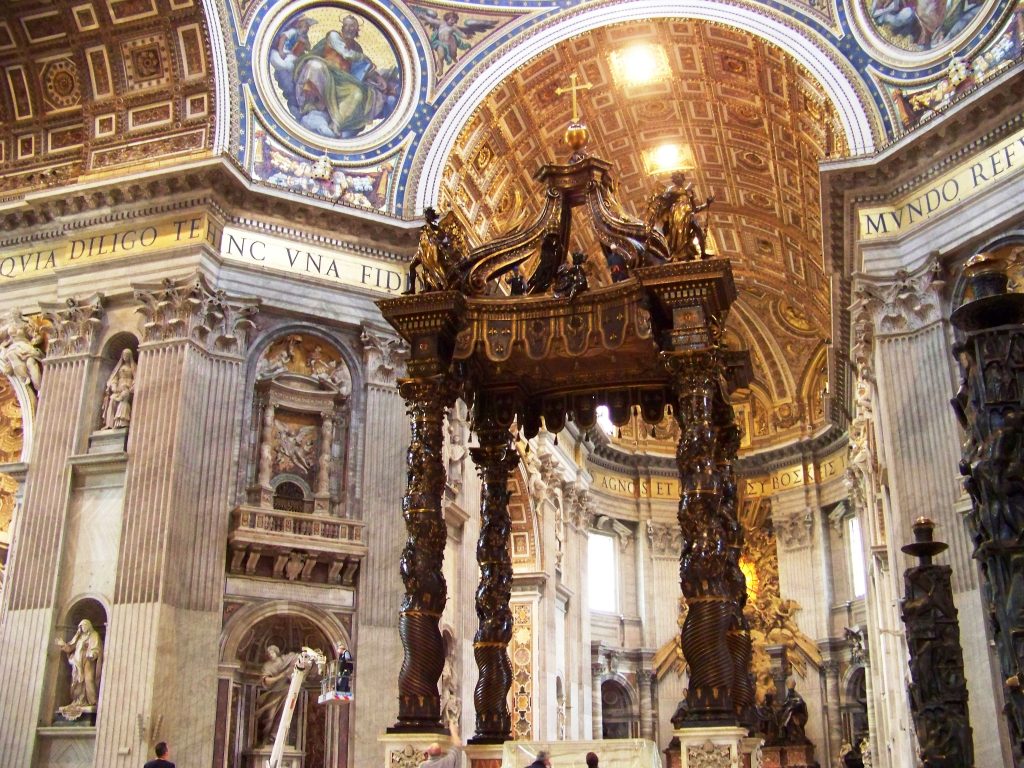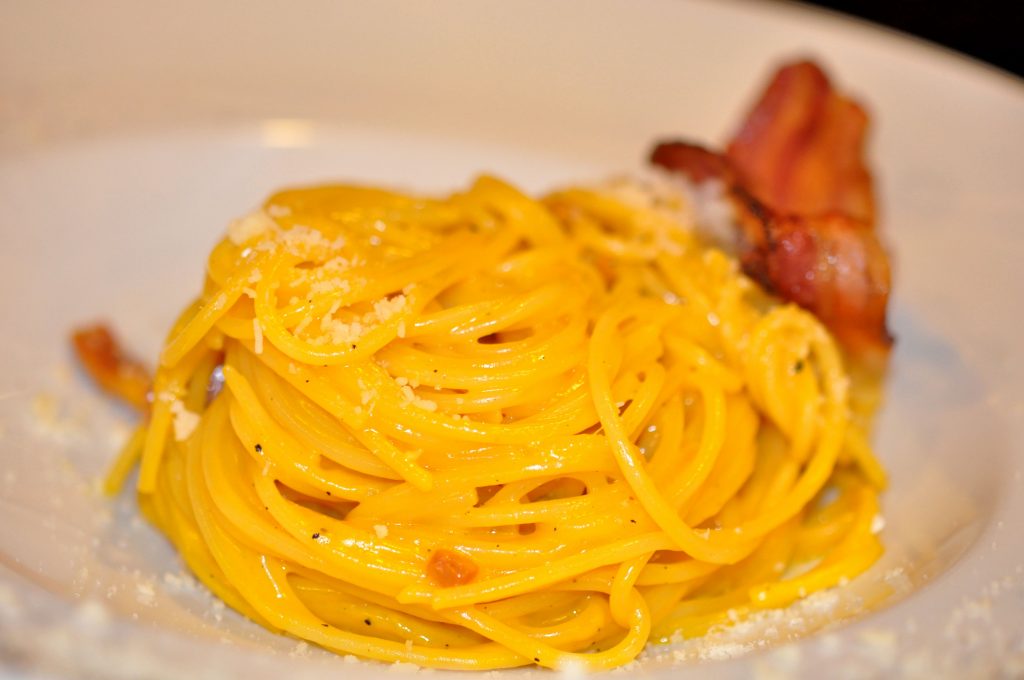If you’re in Rome at Christmas, you’re in luck! As always, there are absolutely tons of ways to get into the holiday spirit.
Here’s the best of what to do in Rome at Christmas. (And don’t miss my ultimate guide to visiting Rome at Christmas!).
1. See the Pope. Over the Christmas season, you’ve got lots of opportunities, from midnight mass (although getting tickets can be tricky) to “Urbi et Orbi” on Christmas Day (no tickets needed). Here’s more on how exactly to see the Pope throughout December and January.

2. Head to a Christmas market. They pop up all over Rome at Christmas. The most famous is, of course, that in Piazza Navona (both at top and below). Here’s a list of other Rome Christmas markets.

3. Worship — in English. For years, the American Catholic church of Santa Susanna was the go-to for English Mass. But after being “evicted” by the cloistered nuns (well, okay then!), the community moved in August 2017 to St. Patrick’s Church, near the US Embassy. Once again this Christmas, they’re hosting a variety of Masses and other ceremonies in English. For non-Catholics, the Anglican Church of All Saints’ Church holds holiday services, including the Service of Nine Lessons with Carols, and the St. Andrews Presbyterian Church of Scotland has services throughout the Christmas season. Other churches with non-Catholic services in English during Christmas include the American Episcopal Church of St. Paul’s Within the Walls, the Methodist Church at Ponte Sant’Angelo, and the non-denominational Cavalry Chapel.
4. Go ice-skating. Skate underneath the iconic silhouette of Rome’s Castel Sant’Angelo (to be confirmed for 2018 — check here). Other skating rinks in Rome include those at the Auditorium, Re di Roma, Tor di Quinto, and Villa Gordiani.
5. Delve into the tradition of Italian nativity scenes. As well as Christmas cribs popping up in churches all over town, Rome boasts both a museum of more than 3,000 of them and, over Christmas, an exhibition of 200 presepi from artists across the globe (now in its 41st year). Here’s my New York Times piece on where to find presepi in Rome. (The article’s old, but the information’s still good).
6. Check out the Christmas lights. Decorations are getting more ambitious every year, with gorgeous twinklings (and light projections, and jumbo screens) lighting up not only the heart of Rome’s centro storico, but even Termini, EUR, and the Fiumicino airport. Don’t believe me? Check out my photo post of the prettiest lights and decorations in Rome at Christmas!
7. Hear some holiday music. The internationally-renowned academy of Santa Cecilia hosts several Christmas choral concerts in December.
9. Enjoy delicious Christmas sweets. Bakeries are brimming over with yummy holiday offerings like panettone, torrone and pandoro (above). If you’re in Rome at Christmas, make sure to taste the goods. It’s the one time of year that even Italians over-indulge in the sweet stuff!
Also: the 5 most overrated things to do in Rome, how to start planning your trip to Rome, and 11 etiquette mistakes not to make eating in Italy.
If you liked this post, you’ll love The Revealed Rome Handbook: Tips and Tricks for Exploring the Eternal City, available for purchase on Amazon or through my site here! I’m also free for one-on-one consulting sessions to help plan your Italy trip.

















